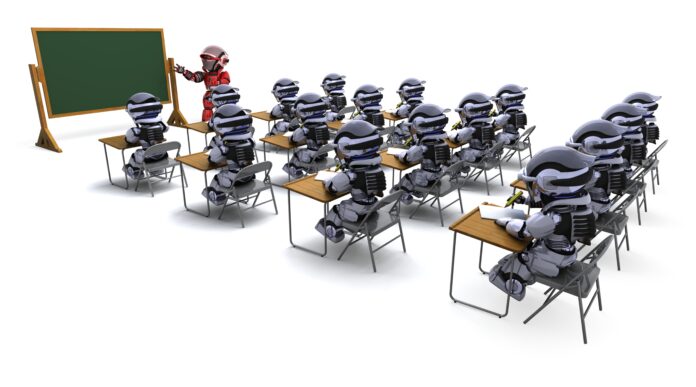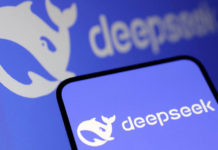Teachers used to frequently tell their students not to rely on calculators to accomplish their arithmetic while they were in elementary school. They wouldn’t carry a calculator along with them, after all. Nowadays, it is impossible to find a more inaccurate statement than that. With a calculator at their fingertips, a lot of students now carry a whole computer in their pockets. The past several decades have seen an exponential growth in artificial intelligence (AI), and in order to keep up with the times, both educators and students need to adopt the newest advancements in AI and educational technology.
Students and teachers use contemporary technologies in all learning situations to make their experiences as informative, effective, and efficient as possible. Collaborative digital spaces and hybrid learning have become crucial elements of education in recent years for K–12 and higher education institutions alike. In light of this advancement, educational technology has developed and grown to incorporate cutting-edge AI systems both within and outside of the classroom.
Since students’ requirements are ever-evolving, educators must also be flexible in their approach to teaching and acquire new skills in using various platforms and technology to support their daily teaching. By utilizing artificial intelligence (AI) and the many advantages of digital learning, educators and learners alike can receive a more comprehensive and cutting-edge education.
The below five subjects show how artificial intelligence (AI) is a crucial tool for different kinds of learners in both K–12 and higher education.
Communication
Students and faculty can now remain in touch with cutting-edge developments in education technology, whether they are participating in collaborative learning in the classroom or learning remotely online. Artificial intelligence (AI) solutions, such as SMS bots, ChatGPT, and predictive technology, can help students with a variety of tasks, including navigating the learning platforms used by their school, gathering material for assignments, and getting prompt answers to questions. AI can also assist professors and teachers in facilitating student discussions and directing the course of small-group collaborative projects.
Automation
Teachers might benefit from using AI to automate tedious daily duties like marking quizzes and examinations and finding little errors in essays. They will have more time and freedom to concentrate on giving detailed feedback, developing thorough lesson plans, and spending one-on-one time with each student as a result. AI tools can also provide students with immediate feedback on their work, empowering them to be more self-reliant in spotting errors and recognizing well-executed projects.

Immersive Learning
Students find it comfortable and engaging to use augmented reality (AR) and virtual reality (VR) as learning tools to get important experiences in the classroom because these technologies are becoming more common in everyday life. Immersion technologies can mimic real-world situations, such as technical experiments and medical simulations, so that students can get hands-on experience in a low-risk environment. Additionally, it can help pupils bridge the gap between their physical environment and abstract ideas, such as magnifying and studying a minuscule object or closely observing the planets. In addition to offering students a wealth of new and captivating ways to view and comprehend concepts, augmented reality and virtual reality also open up a second, interactive, and collaborative learning channel for students who might not be as receptive to more conventional learning resources like study guides and textbooks.
Data-Driven Results
Data is continuously gathered during a student’s education in order to better understand and anticipate their evolving needs and the best ways for them to study. AI technologies enable instructors and lecturers to assess patterns in the performance of a single student or the class as a whole by swiftly and automatically analysing and reporting on this data. Equipped with this understanding, teachers can customize their lesson plans and be more proactive in meeting the requirements of their pupils, which will ultimately lead to a rise in everyone’s academic progress.
Personalised Learning
There are several variables that can affect a student’s learning style. For instance, although some students learn best through memorization and flashcards, others could learn best through more interactive and visual experiences. By analysing AI-collected data, educators can become better informed and equipped to work with a variety of student types. Educators can create customized learning paths for individual students by utilizing the insights obtained from AI algorithms. These personalized learning paths can include elements such as modifying the types of content, accommodating students’ comfort levels, adapting to their learning pace, and assessing the students’ understanding of the learning objectives. Additionally, teachers may target teaching and cut down on the time it takes to design activities that best support each student by using AI technology to help them plan, schedule, and generate proposed lesson ideas more efficiently.
Teachers will continue to prioritize upholding academic integrity and validity in all assignments as artificial intelligence (AI) becomes more prevalent in the classroom. While the goal of older AI systems was to assist students in succeeding academically, the goal of more recent AI systems is to enable educators to maximize the use of AI for students and promote ethical, positive interactions with AI. Encouraging teachers to trust one another to use AI to create the most successful learning environment possible may help every kid advance academically, socially, and personally.






